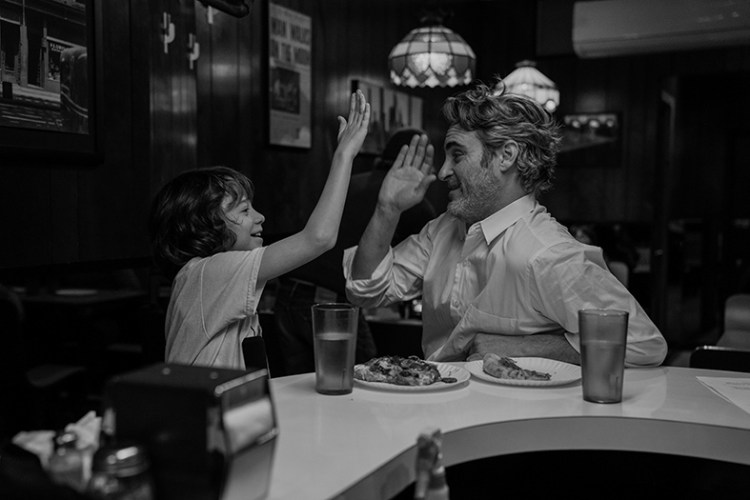“There are no right or wrong answers.”
So says Johnny, a patient, constantly curious radio journalist portrayed by Joaquin Phoenix in a gratifyingly mellow, unmannered turn in “C’mon C’mon.”
As the film opens, Johnny is in Detroit interviewing young people for a “This American Life”-adjacent project about children’s’ feelings about their future. Actors often say that their craft is about listening, and “C’mon C’mon” turns that art up to 11: While tweens and teens hold forth about their dreams, anxieties and angers about everything from their families to impending environmental doom, Phoenix’s Johnny listens intently, his boom mic keeping a discreet distance, his eyes fixed on subjects who seem to come alive under his attentive gaze.
That same energy comes into play days later, when Johnny travels to Los Angeles to visit his sister Viv (Gaby Hoffmann) and her 9-year-old son Jesse (Woody Norman). Jesse’s father has moved to Oakland, California, but is descending into one of his periodic bouts with bipolar disorder; Viv asks Johnny to look after Jesse while she tends to her ex, a sojourn that will eventually turn into an Oz-like journey to New York and New Orleans.
Fans of Kenneth Lonergan’s bittersweet uncle-nephew dramedy “You Can Count on Me” will recognize some similar thematic DNA in “C’mon C’mon,” which was written and directed by Mike Mills. And, like that earlier film, this movie is less about the exploits of an adorable moppet and his worldly-wise older relative than the brother-sister relationship that hovers just around the edges. Johnny is entranced by Jesse, a precocious kid who listens to opera and whose wise-child asides would make J.D. Salinger proud. But inevitably Jesse acts like any impulsive, self-involved, outright bratty third-grader, at which point Viv must act as long-distance interpreter, which includes such 21st century concepts as how to do a proper repair after an argument.
In other words Johnny – who is unhappily single and mostly friendless – is learning another 21st century concept: how to “adult.” And in a gentle, thoroughly present performance that feels light-years away from the histrionics of “Joker” and other recent outings, Phoenix returns to the kind of unforced naturalism and slow-burn intensity that made him great in the first place. Newcomer Norman does an impressive job of handling Jesse’s hair-trigger emotional swirls, even if Mills has written the character into annoyingly adorable corners. The real dramatic core of “C’mon C’mon” emerges in Johnny and Viv’s connection, which they are reestablishing after their mother’s death, alluded to in brief but vivid flashbacks. Filmed in moody, reflective black-and-white by Robbie Ryan, “C’mon C’mon” is a purposeful, thoughtful film, its pensive quietude emphasized by occasional readings from essays by the filmmaker Kirsten Johnson and authors Jacqueline Rose and Claire Nivola.
The stakes in “C’mon C’mon” aren’t particularly high. The narrative tension might be fairly described as minimal. But in focusing on protagonists who aren’t epically messed up or dysfunctional, it performs a feat of delicate, gently humane subversion. (“C’mon C’mon” has also proved to be intriguingly prescient, with one of Johnny and Jesse’s private jokes – “blah blah blah” – becoming Greta Thunberg’s famous catchphrase at COP26.)
Johnny’s tentative dip into family life artfully captures the tedium, terror and confounding ecstasy of parenthood, but it more eloquently conveys the pain and discovery involved in simply trying to do one’s best. Although Mills has structured his film along the classic lines of a hero’s quest, it’s really about sitting with unresolved feelings and letting conflict, ambivalence and confusion, in all their messiness, do their necessary work. Will that work end with a repair? Or more repression? There are no right or wrong answers. But “C’mon C’mon” suggests that the questions themselves are worth asking.
Send questions/comments to the editors.



Comments are no longer available on this story